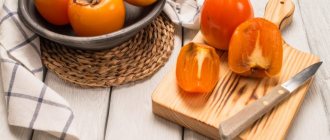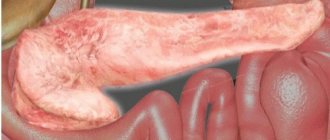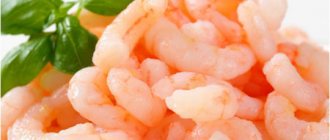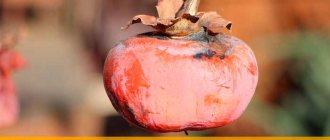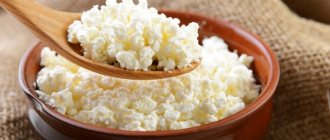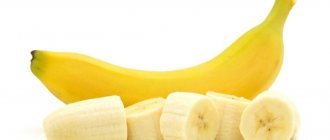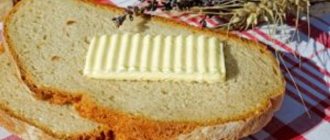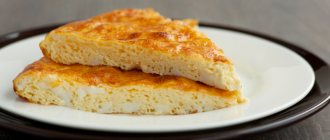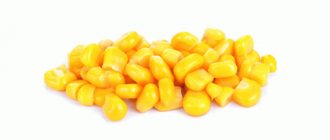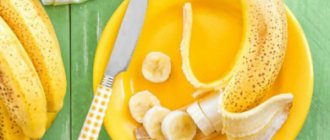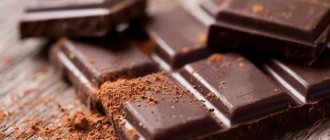Nutritional features for cholecystitis, pancreatitis and gastritis: diet No. 5
Cholecystitis, pancreatitis and gastritis are gastrointestinal disorders. Therefore, it is logical that they are all treated with almost the same diet. But you must remember that a diet for pancreatitis and gastritis is not a panacea, but one of the elements of successful therapy. It is important to create all the conditions so that traumatic and irritating products do not enter the gastrointestinal tract, so that they are easily digested.
The basis of table No. 5 is boiled, steamed and baked food. It should not be too cold or hot, sour, spicy, salty, fatty. All this negatively affects both digestion and the functioning of the endocrine glands.
The correct diet for pancreatitis and cholecystitis is aimed at reducing the load on the liver and pancreas, which are involved in the breakdown of fats. Therefore, their number in the patient’s diet is significantly reduced. At the same time, the diet allows the consumption of beef, chicken and lean fish. The small amount of fat they contain is enough to saturate the body without putting strain on diseased organs. For the same reason, food is steamed or boiled, so as not to consume overcooked fats.
At the same time, pork, lamb, and fatty fish should be completely excluded from the diet. Also prohibited are sausages, smoked meats, semi-finished products, and fast food.
The diet for exacerbation of gastritis and pancreatitis is quite strict. In the first days, sometimes only liquid food is prescribed (vegetable broth, tea, decoctions). This helps calm acute inflammation. Only on the second or third day can you introduce boiled vegetables, low-fat cottage cheese, chicken or rabbit meat into the diet in small portions. Later you can eat cereals, low-fat dairy products, vegetables, and meat dishes.
Any diet for restoring the liver and pancreas, as well as the stomach, is aimed at establishing the correct mechanism of their work. Therefore, food should not only be easily digestible, but also taken in 6-7 doses. You need to eat slowly, chewing each piece thoroughly.
It is necessary to eat at the same time so that the glands “get used” to this regime and do not start producing enzymes prematurely
Many people think that the diet for gastritis, cholecystitis and pancreatitis is strict. But this does not mean that the food there is completely tasteless. After a few days without food additives, people begin to experience the real taste of foods. In addition, this diet is varied: it contains cereals, vegetables, fruits, meat and fish. You can prepare many delicious dishes from them, seasoning them only with a little salt and fresh herbs (parsley, dill, cilantro).
Also, diet 5 for cholecystitis and pancreatitis excludes sweets and soda. Although they do not contain fats, they pose a danger to the body. Firstly, carbonated drinks contain a lot of carbohydrates, the sweetness of which is interrupted by acid. The first put a strain on the pancreas, the second irritates the walls of the stomach.
Secondly, with pancreatitis, the functions of the pancreas are affected, which, in addition to digestion, is also responsible for the level of glucose in the blood, producing insulin. By loading it with a lot of sugar, a person receives insufficient amounts of both insulin and digestive enzymes.
The main features of the diet for gastritis
Gastritis is associated with inflammation of the stomach walls. Therefore, it is important to eat food that will not irritate them further and will promote their recovery.
Food should not be spicy or salty, not hot or cold. It must be chewed thoroughly. After all, foods “ground” in the mouth will be digested much faster, relieving the load on the inflamed organ.
Nutrition rules for pancreatitis
A person can live with chronic pancreatitis for a long time. Sometimes there are periods of exacerbation when it is extremely important to switch to the strictest diet.
If you have a chronic form of the disease, you need to eat as described above: exclude all foods that irritate and burden the pancreas.
In situations where the disease becomes acute, the usual diet needs to be tightened. It is also recommended to analyze what caused the exacerbation. Perhaps it was triggered by some foods from the daily menu. Therefore, you need to adjust your daily diet.
Features of the diet for cholecystitis
Inflammation of the gallbladder is relieved by eliminating junk food from the daily diet. All dishes must be steamed or boiled. This will reduce bile production.
You can eat vegetables, fruits, and low-fat foods (meat, fish, dairy products). It is recommended to exclude heavy foods (mushrooms, pork) from the diet.
Your doctor will give you an approximate daily diet and a list of permitted and prohibited foods.
Diet for cholecystitis - menu for gallbladder health
How to eat during an exacerbation? What can and cannot be eaten if the gallbladder is inflamed? The key to successful treatment of any disease of the digestive system is, first of all, properly organized nutrition.
In case of inflammation of the gallbladder, which is cholecystitis, the diet is designed to minimize the load on the digestive system, help dilute the bile and eliminate the inflammatory process.
The patient's body must also receive all the substances it needs from food.
What should the diet be like?
If you create a menu correctly, therapeutic and preventive nutrition can turn out to be varied, satisfying and tasty. It is affordable, comfortable and easily tolerated by the human body. And all existing restrictions are related to reducing negative symptoms, reducing inflammation, normalizing secretion and restoring the functions of the digestive system.
Chronic diseases of the gallbladder and stomach oblige the patient to monitor his diet, so he must eat throughout his life, taking into account special rules and recommendations.
How to create a diet:
- Follow the regime. Eat in small portions 5-6 times a day, chewing thoroughly and slowly. Meal times should be constant for sufficient production of enzymes and gastric juice.
In case of gastroduodenitis, the attending physician, taking into account the level of acidity in the body, must make amendments to the diet. Fresh vegetables and fruits, rich broths, and the presence of salt and spices in food enhance secretion. To reduce the production of gastric juice and hydrochloric acid, steamed dishes, porridges and purees work. It is necessary to increase the volume of fluid consumed.
Diet 5 for chronic cholecystitis
Diet 5 for chronic cholecystitis determines the diet, which consists of eating in small quantities 5 to 6 times throughout the day. Food on this diet should be boiled or baked in such a way that a rough crust does not appear. Stewed and steamed dishes are also allowed. Ready meals should be heated to a temperature ranging from 20 to 52 degrees Celsius.
It is recommended to include in the diet well-cooked porridge with milk half and half with water from buckwheat and oatmeal, and from rice. Vegetarian soups with pureed vegetables and well-cooked rice, oatmeal, finely chopped potatoes, pumpkin, and carrots are allowed. Dietary instructions also allow you to eat milk soups half and half with water, puree soups and creams. The permitted bakery products include: bread made from grade 1-2 wheat flour, dried rye bread made from peeled and sifted flour, as well as soft biscuits.
Dietary recommendations regarding meat provide the opportunity to include lean meat varieties, beef, veal, chicken and turkey, and rabbit meat in the diet. Before consumption, all tendons must be removed from the meat and the skin removed from the poultry. For cutlets, you need to use low-fat minced meat, and they should be steamed.
Diet 5 for chronic cholecystitis allows you to diversify your diet with low-fat fish - steamed, boiled and in cutlets. You can eat low-fat soaked herring, stuffed fish, and seafood salads.
Dairy products acceptable for this diet include milk, fresh yogurt, kefir, and acidophilus milk. You can eat low-fat and half-fat cottage cheese, as well as low-fat and mild cheese.
It is possible to diversify the menu with vegetables using raw, pureed, boiled or steamed vegetables: greens, potatoes, carrots, cauliflower and beets. They are prepared in the form of purees, soufflés, etc. In addition, you can prepare baked and steamed omelettes from eggs. To do this, you need to adhere to the ratio of half or one whole yolk to 1-2 whites.
Tea and coffee must be brewed weakly; tea can be with lemon, and coffee with added milk. Other useful drinks include rosehip decoction and juices from fruits and berries.
The consumption of butter should be limited to 10-20 g per day. No more than 10 g of table salt per day is allowed.
Requirements and rules of therapeutic nutrition
Inflammation of the gastric mucosa can manifest itself in several stages - initial, chronic and irreversible. If the walls of the organ have been damaged for a long time and severely, then even a slight relaxation of the diet causes an attack. During this period, the person is prescribed the most gentle diet and special medications.
Two organs, the pancreas and the gallbladder, perform vital functions for humans and mutually influence each other.
Diseases associated with gastritis:
- Cholecystitis. Violation of the natural production and passage of bile causes stagnation in the ducts and indigestion of food. The pathogenic process progresses rapidly, leading to infection, suppuration and stone formation. The condition can be extremely severe with severe spasms and sharp pain.
- Pancreatitis. Stopping the production of enzymes in the pancreas inevitably entails a deterioration of the entire digestive process - from the moment food enters the stomach to the stage of passage of residues through the intestines, small and large intestines. In the acute form, the patient experiences discomfort and refuses to eat, he feels nauseous and vomits, and suffers from gas formation and constipation.
Treatment should be comprehensive and prescribed only after diagnosis. Mandatory points of therapy are medications, nutrition, lifestyle, daily routine, qualified medical supervision.
Gastritis pancreatitis and cholecystitis and treatment of the pancreas
Gastritis and pancreatitis are inflammations, in the first case of the stomach wall, in the second - of the pancreas. Both of them have a chronic form and periods of exacerbations, foci of inflammation, and similar symptoms.
Symptoms of the three diseases appear immediately, the common signs are:
- alternating salivation and dry mouth;
- dizziness;
- weakness, apathy, anxiety;
- nausea and vomiting.
Constant inflammation turns the disease into a chronic one, and the combination of the two dramatically increases the likelihood of death. Taken together, the three diseases guarantee a long, difficult treatment. All organs are prone to self-destruction, since they contain enzymes that digest food.
Acceptable food and drinks
The essence of a proper diet for gastritis and cholecystitis comes down to a balance of protein and carbohydrate foods, as well as a strict limitation of fats. Priority is given to liquids and plant foods.
The main goal of the treatment menu is to restore the normal functioning of the entire digestive system, organs of digestion, absorption, secretion and excretion.
What foods are allowed for consumption:
- slimy porridges - rice, semolina, buckwheat, millet or oatmeal with a semi-liquid consistency, if with the addition of milk, then with the lowest percentage of fat content;
- soups - often made from vegetables that need to be well boiled and mashed; a small amount of cereal or pasta is added to a light meat broth;
- lean meat - turkey, chicken, rabbit or veal, they are served in the form of steam cutlets or after long cooking and in small quantities;
- white fish and seafood in limited quantities, baked or steamed;
- eggs can be used to prepare omelettes and soufflés;
- fermented milk products - twice or thrice a week, only fresh and low-fat;
- bread - allowed for consumption in the form of dried crackers, biscuits are allowed, fresh baked goods and cookies are prohibited;
- sometimes non-sour sweets are allowed - marshmallows, marshmallows, marmalade, dried fruits, jam and honey;
- Drinks include fruit drinks and compotes, jelly and herbal teas.
To eliminate complications and consequences of the disease, it is necessary to remove fatty, fried, smoked and spicy foods, saltiness and seasonings, chocolate, strong coffee and tea from the diet.
Diet food
A diet for gastritis and cholecystitis allows you to “unload” the affected organs, helps wounds heal faster, and normalizes the functions of the stomach and gall bladder. If these diseases occur chronically, the patient needs to create a special menu that he will adhere to throughout his life. Otherwise, the disease will worsen and lead to complications. It should be noted that the diet for gastritis and pancreatitis, cholecystitis is not too different.
There are general rules that apply to these diseases:
- you need to eat in small portions;
- eat up to five times a day;
- strictly adhere to one time for eating, this is necessary for the formation of constant acid secretion in the stomach and the outflow of bile;
- the first breakfast, lunch, and dinner should be denser, and the second breakfast and afternoon snack should be light;
- last meal three hours before bedtime;
- food should be steamed; stewed, baked or boiled dishes are also suitable;
- meat and vegetables must be consumed pureed;
- drink about two liters of water.
Products prohibited for consumption
The basis of the menu is soups, always vegetable, and only if the patient’s condition has stabilized, light meat ones are allowed. For their preparation, traditional vegetables are used - potatoes, carrots, zucchini and pumpkin; a small amount of cereals, pasta or cereals is added to the liquid. Vegetarian borscht is made with beets, and you can add a teaspoon of sour cream to cabbage soup. Pilaf is prepared on the basis of dried fruits; a variety of casseroles and puddings made from apples and pears, cottage cheese, noodles and oatmeal are allowed for consumption.
Doctors prescribe for people suffering from gastritis and cholecystitis to adhere to the recommendations of the treatment table No. 2 and 5.
List of prohibited products:
- fatty meat, caviar and fish;
- mushrooms, lentils and legumes;
- any cheeses and sausages;
- lard and canned food;
- salted, fried and smoked foods;
- spices and seasonings;
- pastries, pancakes, fresh bread;
- dairy products with a high proportion of fat;
- greens and vegetables with sour and spicy taste - radish, radish, tomatoes, eggplant, onions and garlic;
- almost all fruits and berries;
- nuts and seeds;
- vegetable oil and animal fat;
- any sauces and spices;
- chocolate, ice cream, halva, sweets, sherbet;
- carbonated drinks, kvass, alcohol, coffee, cocoa;
- waffles, cookies, desserts, cakes and pastries.
All restrictions allow you to reduce the load on the suffering organ, restore and improve its functioning. Proper nutrition and a healthy lifestyle will help consolidate the positive result in the future and eliminate the likelihood of complications.
What should you not eat if you have pancreatitis or cholecystitis?
- Fresh buns or bread, fried pies, muffins and puff pastries.
- Mushroom soups, strong rich meat broth, fish soup, borscht with cabbage or sorrel, cold soups.
- Canned fish, ram, smoked and fried fish, caviar.
- Fatty meat, offal, smoked, marinated, fried and canned meat.
- Fatty dairy products, salty and spicy cheeses.
- Beans, peas, lentils.
- Fried eggs and omelettes.
- Vegetables that irritate the walls of the digestive tract and cause gas formation: radishes, cabbage, onions, horseradish, sorrel.
- Animal fat and lard.
- Sweets, chocolates, ice cream, cakes and pastries, sour berries and fruits.
- Carbonated drinks, strongly brewed tea and coffee, alcoholic drinks.
- Salt is allowed in moderation, maximum 10 g per day.
It is unacceptable to eat fast food, convenience foods, and sandwiches. Each meal should be taken slowly, all components of the dish should be chewed well in order to make the work of the gastrointestinal tract as easy as possible. You can't overeat. Therapeutic fasting can be practiced only with permission and under the supervision of a physician.
Why is it important to eat right when you have gastritis and cholecystitis?
The main dietary rule during exacerbations is mono-unloading. The best option is cereals or cottage cheese. It is possible that the patient will be forced to switch exclusively to liquids - water, jelly, compote or weak tea. A limited menu is prescribed for 2-3 days, until the negative symptoms subside and the patient’s condition stabilizes. In the future, it is necessary to adhere to a special diet - vegetable puree soups, liquid porridge with water, fermented baked milk and kefir up to 2.5% fat. The range of drinks and dishes should be expanded gradually, but within the acceptable range of products.
Treatment of the digestive system will be successful only if there is a healthy lifestyle and strict adherence to the diet.
Any additional load on the liver, kidneys and gastrointestinal tract is unacceptable. The activity and nutrition regimen is planned taking into account the underlying pathology and concomitant functional disorders. During an exacerbation of pancreatitis, a person is forced to completely give up food for one or two days. Next, rice water, light dietary soup, liquid porridge and cottage cheese are gradually introduced.
Treatment of cholecystitis
Treatment of cholecystitis can be medicinal and surgical. Surgical techniques include removal of the gallbladder (cholecystectomy) laparoscopically (minimally invasive procedure) or conventional access. It is used in the acute inflammatory process, if conservative actions are ineffective, with the development of jaundice, routinely in the presence of stones in the bladder (in order to prevent painful attacks and acute inflammation in the future).
Drug therapy for cholecystitis is aimed at eliminating the infection (antibiotics, antiparasitics), normalizing the motility of the biliary tract and the outflow of bile (therapeutic diet, antispasmodic drugs, choleretic drugs, therapeutic duodenal intubation).
Treatment of cholecystitis can be medicinal and surgical
Diet for cholecystitis is very important, since unhealthy diet plays an important role in the development of the disease. The basic principles of nutrition include frequent but fractional meals with the exception of fatty, fried, spicy foods. You need to lead a healthy and active lifestyle. It is necessary to move more, which will prevent stagnation of bile and the development of the disease. It is also necessary to get rid of bad habits (smoking and drinking alcohol).
Treatment of chronic cholecystitis
During a period of severe exacerbation of the disease, the patient must be hospitalized in a therapeutic hospital. In mild cases, treatment is usually carried out on an outpatient basis. During the period of exacerbation, patients with chronic cholecystitis are recommended to rest in bed for 7-10 days. Food should be mechanically and chemically gentle and not have a cholekinetic effect. After eliminating signs of exacerbation of chronic cholecystitis, diet No. 5 is prescribed.
Drug therapy includes the use of drugs to relieve pain, normalize the function of the autonomic nervous system and the rational use of choleretic drugs described in the previous section. As an antispasmodic, it is advisable to prescribe duspatalin 200 mg (1 drop) 2 times a day. In the treatment of chronic cholecystitis, the use of enzyme preparations (digestal, festal, panzinorm, creon) for 3 weeks during meals, as well as antacid preparations (maalox, phosphalugel, remagel, protab), used 1.5-2 hours after meals, is indicated.
Prevention of cholecystitis
The most important factor in the prevention and treatment of cholecystitis is the normalization of diet. It is necessary to restore the function of the gallbladder and organize adequate passage of bile. In order for bile not to stagnate, it is necessary to eat regularly, and in order for it to be released in full, food must be in adequate quantity.
If you do not normalize your diet and eat frequently (there are such recommendations), then the gallbladder will be constantly in a contracted state, bile will flow into the intestines directly from the liver, and the bile that is in the bladder will remain there, without a chance to be replaced by fresh bile. Stagnation of bile is a direct cause of inflammation and stone formation. Also, with chronic cholecystitis, it is necessary to work on normalizing weight and physical inactivity. The composition of bile and the functioning of the gallbladder are directly related to metabolism and lifestyle.
Taking honey dissolved in a glass of warm water on an empty stomach is a well-known method for treating gastrointestinal diseases, prescribed in the sunnah. For chronic cholecystitis, it is also effective - it helps cleanse the entire upper floor of the gastrointestinal tract, remove excess mucus and relieve spasms, and remove bile. You can take honey every morning for both prevention and treatment - without the risk of side effects.
Also in the treatment of chronic cholecystitis, black cumin seed oil can be used, a teaspoon twice a day: if tolerated well, you can take it with honey on an empty stomach; if tolerated poorly, try taking it after meals. Black cumin oil has a choleretic effect, and bactericidal properties help cope with the infectious component.
Example of a treatment menu for 1 day
During the remission stage, the patient’s diet should be as gentle as possible. Moreover, all products are subjected to long-term thermal and mechanical processing. Spicy and fatty foods, rough and difficult to digest foods are completely excluded. The total daily calorie content is in the range of 2000-2500 kcal, the recommended volume of liquid is 2 liters.
Therapeutic nutrition plan for the day:
- Breakfast. Oatmeal cooked in water without oil, an omelette made from one egg, herbal tea or rosehip decoction.
- Snack. Low-fat cottage cheese 100-150 grams, baked apple or pear.
- Dinner. A serving of noodle soup with vegetable broth. Mashed potatoes or zucchini with a steam cutlet - made from chicken or lean meat.
- Afternoon snack. Biscuits or crackers, a glass of jelly or compote.
- Dinner. Baked white fish, some rice or boiled vegetables. The drink is yogurt or kefir.
For gastritis and cholecystitis, a strict diet is prescribed. Is it possible to eat sauerkraut? For these diseases, vegetables are acceptable in small quantities, as part of soups and side dishes. Fermenting foods and eating them is recommended only for healthy people and exclusively for preventive purposes. An acidic environment normalizes microflora and improves motor skills, helps cleanse the body and strengthen the immune system.
A proper nutrition plan is the main condition for recovery. There are many recipes that will help you prepare tasty and healthy food from the permitted list of products. This will allow the person to quickly get rid of the problem and return to normal life.
The video will introduce you to the basic principles of treatment table No. 5:
Cholecystitis is an inflammation of the gallbladder. This small organ of the digestive system secretes a special secretion - bile. It actively participates in the process of food digestion, helping to break down protein and fats.
Causes of the disease:
- Penetration of pathogenic microflora (streptococci, enterococci). Carriers of infections are carried through the blood or lymph flow due to inflammatory diseases existing in a person.
- Infection with parasites (roundworms, lamblia).
- Stagnation of bile due to pregnancy, physical activity, stress.
- Overeating, poor diet, low physical activity.
- Stones that impede the passage of bile.
- Organ injuries.
In acute cases, pain is observed in the right side under the ribs. This is the main sign of a dangerous condition. A person may also feel nauseous, vomit, and shiver. The temperature rises, the pulse quickens. If a stone blocks the bile duct, then bile does not enter the intestines, which causes colic. The color of the skin and eye sclera becomes yellow.
Chronic cholecystitis is an inflammation that develops gradually. Patients experience aching pain in the liver area after eating, bloating, belching, and a feeling of bitterness in the mouth.
When inflammation occurs simultaneously with stones, the disease calculous cholecystitis begins. Without stones, the disease is called acalculous cholecystitis. Both varieties occur in acute and chronic forms. The main symptom of calculous cholecystitis is colic.
Permitted and prohibited products
The diet for chronic cholecystitis is aimed at maintaining a moderate simulation of bile excretion from the gallbladder. Therefore, with this type of diet, it is strictly forbidden to consume any foods that cause intense bile formation and provoke attacks of biliary colic. These are primarily products rich in essential oils and with a sharp or pungent taste (onions, garlic, radishes, etc.).
In addition, for any type of chronic cholecystitis, foods high in cholesterol are strictly prohibited. The fact is that it is the high level of bad cholesterol in the blood that is the main cause of the formation of gallstones and the development of calculous cholecystitis. There are many such products, but visceral fat and lard are especially harmful.
The list of prohibited foods also includes leafy greens, which contain oxalic acid. Its use greatly increases the risk of calcium stones forming in the gall bladder, liver and kidneys. In addition, it is not recommended to consume coarse insoluble fiber, which often causes flatulence, bloating and diarrhea.
List of prohibited products:
- Fatty meats: pork, lamb, fatty beef, duck, goose, lard, beef and lamb fat, bacon, ham, smoked chicken;
- By-products: liver, kidneys, brains and tongue;
- Sausages: smoked sausage, fatty sausages and small sausages;
- Fish and seafood: fatty fish (salmon, trout, salmon, catfish and others), black and red caviar, any smoked fish and canned fish;
- Milk and dairy products: full-fat milk (4.5%), cream (over 35%), whipped cream, full-fat sour cream, full-fat cheeses (Parmesan, Gouda, etc.);
- Eggs: hard-boiled, fried and scrambled eggs;
- Vegetables and greens: onions, garlic, radishes, rutabaga, turnips, raw beets, sorrel, spinach, horseradish, all canned vegetables, chili peppers;
- Fruits and berries: grapes, dates, mangoes, pineapples;
- Mushrooms: any types of mushrooms (fresh, salted and pickled);
- Legumes: beans, peas, chickpeas, lentils;
- Bakery products: white bread, pastries made from butter, puff pastry and shortbread;
- Flour products: dumplings and dumplings (homemade and store-bought);
- Nuts: all types of nuts and seeds;
- Sweets: cakes and cream pies, chocolate, ice cream;
- Sauces: mayonnaise, mustard, ketchup, adjika;
- Drinks: any types of alcohol, sweet carbonated drinks, sparkling water, coffee, cocoa.
Allowed foods:
- Lean meat: veal, lean beef, chicken, turkey, rabbit;
- Fish and seafood: low-fat fish (hake, pollock, cod, flounder, pike perch, pike, carp, mullet, etc.);
- Sausages: doctor's sausage, milk sausages,
- Milk and dairy products: skim milk, low-fat kefir, fermented baked milk, curdled milk and yogurt;
- Eggs: no more than 1 per day. Steam omelette is allowed (Better white) and an egg in a bag;
- Vegetables and greens: eggplant, zucchini, cauliflower and white cabbage, broccoli, carrots, cucumbers, tomatoes, bell peppers, pumpkin, lettuce and iceberg lettuce, fresh green peas, green beans, parsley, dill and cilantro;
- Fruits and berries: all non-acidic types of fruit and berry products. Apples and bananas are especially useful;
- Bakery products: yesterday's bread made from 1st and 2nd grade flour, bran and whole grain bread;
- Pasta: all varieties of pasta and vermicelli, noodles made from wheat and buckwheat flour;
- Dried fruits: dried apricots, prunes;
- Cereals: buckwheat, oatmeal, rice, pearl barley, wheat, corn, millet;
- Sweets: jam, jelly, marshmallows, fudge candies, marshmallows, marmalade, biscuits, honey, xylitol (partially replace sugar with them);
- Drinks: mineral water. green tea, rosehip infusion, herbal tea, fruit and vegetable juices, compotes, jelly.
Proper nutrition for cholecystitis
The specialist must prescribe a diet for treatment and restoration of the body. If for health reasons the patient has to take any medications, the doctor must be informed about this. A number of drugs interfere with the flow of bile.
During an exacerbation
At first, it is very important not to overload the digestive tract. Thirst is quenched with sweet tea, rosehip decoction (diluted with water, do not overuse for gastritis or ulcers). Non-carbonated mineral water and freshly squeezed juices are suitable.
When the attacks of pain are stopped, the patient can be fed pureed soup, slimy porridge, tea, to which crackers are added.
If the discomfort has disappeared, protein foods are allowed: low-fat cottage cheese, a piece of meat, fish (boil and puree).
When, after an exacerbation of the disease, its symptoms weaken, it is impossible to immediately return to the usual diet in order to prevent a new attack. Nutritionists have developed a special treatment table number 5a. It is characterized by a reduction in fat in food while maintaining a sufficient amount of fat and carbohydrates. The basic rule is to only puree food. If you are sick, you need to eat often, in small portions.
After cholecystitis in acute form, it is also suggested to follow a certain diet.
In case of chronic disease
Doctors distinguish two conditions: exacerbation and remission (painful manifestations and unpleasant symptoms disappear).
For the first situation, recommendations for the patient’s diet are the same as for an attack of acute cholecystitis. In the first days of an exacerbation, fasting is indicated so as not to burden the patient’s intestines. Already during the period of incomplete remission, the patient is prescribed a diet for cholecystitis number 5. This therapeutic diet is also prescribed for a state of stable remission, when the patient recovers. It can prevent an unpleasant complication – the formation of stones.
- Stewing, baking (but without crust), steaming, and boiling are allowed. You can't fry.
- Everything is prepared in the form of puree, steam cutlets, soufflé. Chicken skin and meat tendons are removed.
- Meat, foods containing a lot of fiber, soups must be ground, cereals must be boiled, and vegetables must be chopped.
- They eat often, but little by little, preferably at the same time. This is how the outflow of bile returns to normal. The release of too much of it is dangerous due to an attack of pain.
- Of vegetable fats, it is preferable to use sunflower, sea buckthorn, flaxseed, and olive oil. Animals are also important, but they are not refractory. You can add a little butter to the porridge or second.
- Products that can enhance fermentation (whole milk, canned food, baked goods) are limited.
- The menu should include many vegetable and fruit dishes. Their healing properties help cope with the unpleasant consequences of the disease: pomegranate has a choleretic effect, pears reduce pain and heartburn, apples have an anti-inflammatory effect.
- For acalculous cholecystitis, it is not contraindicated to eat one egg per day.
- Prohibited seasonings and sauces are tomato ketchup, mayonnaise, vinegar, adjika, mustard.
- Salt is limited.
- Food and drink should not be below room temperature.
- It is important to eat food rich in lipotropics (beets, fish, cottage cheese), dietary fiber, pectin (apples).
Diet number 5 is not so strict, it allows patients a more varied diet: sausage, high-quality milk sausages, seafood (shrimp, seaweed), tomatoes - a little of everything. You can eat yesterday's rye bread.
Nuts are consumed with caution: in case of exacerbation of cholecystitis and newly diagnosed disease, it is recommended not to eat them. With pancreatitis in the acute stage, nuts are prohibited for a whole year. The acceptable amount is no more than one tablespoon of kernels, crushed in a blender, a couple of times a week. Nuts should only be purchased unshelled: the fats in peeled and processed kernels can become rancid and lose their beneficial properties. The best nuts to choose are walnuts (mixing them with honey, you can make a delicious dessert), and pine nuts. The popular peanut can be a strong allergen and is a difficult food for the stomach. Pumpkin seeds are allowed in small doses.
Diet for different forms of cholecystitis
If the disease is in an acute stage, then the patient is prescribed to refuse food for several days. It is necessary to relieve the digestive system as much as possible.
So in case of acute cholecystitis, the diet consists of a maximum of: sweet, weakly brewed tea;
• mineral water (still); • decoction of rose hips (in the absence of any contraindications); • freshly squeezed juices (berry, fruit).
All this can be consumed in the first one or two days.
as long as symptoms remain acute.
Then you can add to your diet:
• pureed soup; • jelly; • white crackers; • slimy porridge.
After another two or three days, if there is no pain, you are allowed to eat:
• low-fat cottage cheese; • lean fish; • chopped, pureed meat (without fat).
By the end of the week after the exacerbation, other products are gradually introduced. But, according to doctors’ advice, nutrition should remain gentle for about another month.
If the disease has become chronic and there is no exacerbation at the moment, it is still necessary to adhere to certain rules.
So, chronic cholecystitis requires the patient to have the following diet:
1. Eat in small portions. The total volume of everything eaten and drunk per day should not exceed 3.5 kilograms.
2. A day requires five meals: in addition to breakfast, lunch and dinner, there should also be a second breakfast and an afternoon snack, or just small snacks with fruit and fermented milk products.
3. You need to select products only from the list of allowed ones.
4. Cook exclusively by boiling or steaming. Occasionally it is allowed to bake, but you cannot add oil.
5. You can put various oils of vegetable origin into your food, however, use them only in fresh, unheated form.
6. All dishes should be eaten warm; food that is too hot or cold should be avoided.
7. Every meal should include vegetables. They are recommended to be stewed, boiled, or eaten fresh.
8. Fish, meat - boiled or steamed, chicken without skin. Strong broths are also undesirable, especially in the first weeks after an exacerbation.
Diet for cholecystitis: what is allowed and useful
To dilute the bile and not to overload the digestive system - this is precisely what the menu for cholecystitis serves these purposes.
• Vegetables, greens. Fruits are only non-acidic. Sweet pears are especially recommended, as they help dilute bile. • Dried white bread, grain, bran. Cookies are also allowed, but they must not be rich. • Meat, fish, high-quality sausages – low-fat, without hot spices. • Boiled eggs (chicken, quail). • Cereals: oatmeal, buckwheat. Pasta is also allowed. • Natural and low-fat yoghurts, sour cream, cottage cheese. • Low-fat cheeses. • From sweets: jam, marmalade (natural) or marshmallows. • From drinks: weakly brewed tea, coffee with milk, sweet fruit compotes, jelly, rosehip decoction. Particularly useful: beet juice, chicory-based drink.
Diet after cholecystectomy
For calculous and acalculous cholecystitis, cholecystectomy is performed according to indications.
After surgery, you should not eat for 12 hours. Then, to satisfy hunger, porridge, vegetable soup, and jelly are allowed. After 4-5 days, add vegetable puree, cottage cheese, dietary dishes from meat and fish, boiled and chopped. Wheat bran is useful, improving the flow of bile.
In the first three months, the doctor will recommend table number five to the patient. Strict adherence to the basic principles of diet and fractional meals are important for restoring the functioning of the gastrointestinal tract. After this time, the specialist will determine whether relaxation is possible, but in one form or another the patient will have to follow this diet for the rest of his life. Alcohol is strictly prohibited in the first two years. In the future, this restriction, depending on the state of health, may be slightly weakened: in exceptional cases, red wine (no more than a glass) and non-alcoholic beer are allowed. The body of many patients who have undergone this operation tolerates alcohol very poorly.
Sometimes the patient may experience postcholecystectomy syndrome. Its symptoms: nausea, vomiting, dull pain under the right rib, increased sweating, jaundice. They may appear immediately after surgery or several years later. In such a situation, you should definitely contact a specialist who will prescribe treatment, which includes a diet with a minimum amount of fatty foods.
